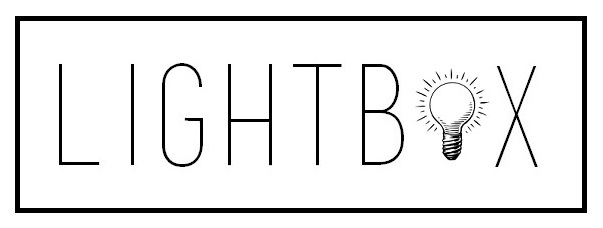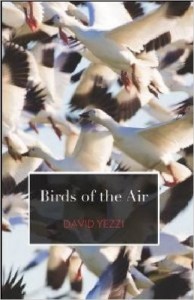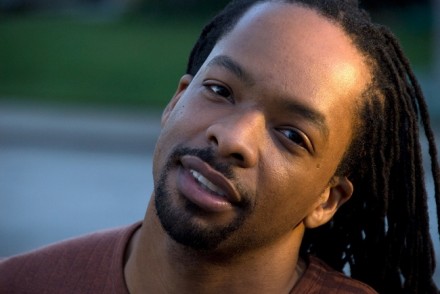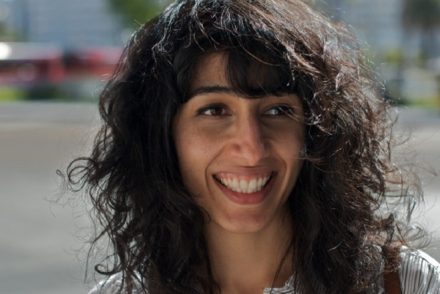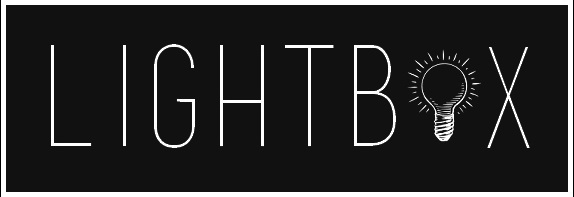“The question for me is not ‘What is the poem about?’ but, rather, ‘Can you dance to it?'”
David Yezzi is the author of The Hidden Model (TriQuarterly, 2003); Azores (Swallow, 2008), a Slate magazine book of the year; and Birds of the Air (2013), a Publishers Weekly pick. He is the editor of The Swallow Anthology of New American Poets (2009).
His libretto for a chamber opera by David Conte, Firebird Motel, received its premiere in San Francisco in 2003 and was released on CD from Arsis in 2007. His libretto of F. Scott Fitzgerald’s The Last Tycoon for composer Cyril Deaconoff received a workshop production at West Bay Opera in California in 2010. And his verse dramas On the Rocks and Dirty Dan & Other Travesties have been produced by Verse Theater Manhattan. As an actor and co-founder of Thick Description, a San Francisco theater company, Mr. Yezzi has performed in works by Shakespeare, Shaw, Brecht, Goethe, Williams, and others, in the United States and Europe.
A former director of the Unterberg Poetry Center of the 92nd Street Y in New York, he is poetry editor of The New Criterion and an editor of The Hopkins Review. A Stegner Fellow in poetry at Stanford University from 1998 to 2000, his poems have appeared in The Atlantic, The Paris Review, The New Republic, The Best American Poetry, The Yale Review, Poetry, The Pushcart Anthology, and elsewhere. He teaches in the Writing Seminars at Johns Hopkins.
![]() How are poems different when read silently and when read aloud? Do you think poems require, in some sense, activation by the human voice?
How are poems different when read silently and when read aloud? Do you think poems require, in some sense, activation by the human voice?
I don’t find a great difference between reading a poem silently and reading a poem aloud—though not for the reasons you might think! I agree with those poets and critics—like Yvor Winters, in his essay “The Audible Reading of Poetry,” for example—who believe that, when it comes to poetry, there’s no such thing as silent reading.
Even when I am reading a poem silently to myself, the voice in my head is pronouncing every word. Winters writes: “I mean to indicate the reading of poetry not merely for the sensual ear, but for the mind’s ear as well; yet the minds ear can be trained only by way of the other, and the matter, practically considered, comes inescapably back to reading poetry aloud.” Speed readers read without hearing the words, but it is not possible to speed read a poem. In poetry, the sound is the meaning, since poems are concerned with the emotional content of language and sound is one of the chief ways that emotion in language is communicated.
Hearing a poem in the mind’s ear, then, can create the same physical excitement as reading the poem aloud. Of course, I always want to read it out loud as well, to savor the sounds on the voice, to get it even more fully into the body. I. A. Richards wrote that the effect of poetic rhythm “is not due to our perceiving a pattern in something outside us, but to our becoming patterned ourselves.”
Yeats’s “body swayed to music” describes how I experience a poem. The question for me is not “What is the poem about? but, rather, “Can you dance to it?”
![]() You’ve taught a course on reading poems aloud at the 92nd Street Y and at Johns Hopkins University. What are some important strategies and tips for us as we read, recite, and perform our own poems and poems by others?
You’ve taught a course on reading poems aloud at the 92nd Street Y and at Johns Hopkins University. What are some important strategies and tips for us as we read, recite, and perform our own poems and poems by others?
As a speech-coach friend of mine likes to say, No one ever complained that a speaker read too slowly, too loudly, or too briefly.
Performing poetry is really an act of generosity. The audience wants to hear you. They’ve gone out of their way, so it’s important to be heard. You only have one chance to get the poem across, so slow down. Speak loudly and clearly, breathe, articulate. If you lose the audience because they can’t make out what you’re saying it’s very hard to get them back. They’ve lost the thread.
Also: I always time my reading beforehand, and I keep a watch handy at the podium. There is a special circle in hell for readers who hog the mic.
Aside from these, the main thing is relaxation. Physical tension stops the voice from expressing the necessary range of sound and feeling. Again: breathe. Concentrate on the task at hand. I try to remind myself that reading to an audience is fun (and a privilege!). It’s like going on a ride: you can ride the music of the poem like surfing a wave.
![]() What various influences do you draw from in your poems, in terms of sound-play and performance? Are there important models for how you perform your poems?
What various influences do you draw from in your poems, in terms of sound-play and performance? Are there important models for how you perform your poems?
I listen to lots of poetry online these days. The Poetry Foundation and the Poetry Archive in England have an unbelievable number of recordings of poets reading their own work. Hearing a poem in the poet’s own voice can be an great key to understanding the poem. Also: there is often a strong connection between a poet’s writing “voice” and his or her speaking voice.
I like to collect audio recordings of poets. Caedmon has some great ones from back in the day. Random house brought out a series called the Poet’s Voice. The one’s I use often in my classes are Elizabeth Bishop, Philip Larkin, Langston Hughes, John Berryman, T. S. Eliot, W. H. Auden, Gwendolyn Brooks, Anthony Hecht, Kay Ryan, John Gielgud reading Shakespeare’s Sonnets, Paul Scofield’s Lear, Robert Hayden, Geoffrey Hill, Robert Frost, Richard Burton reading Thomas Hardy, Sylvia Plath, and others.
I have recordings of Auden reading at the 92nd Street Y that I love. His reading style is clear and quietly musical, not showy but effortless and powerful. Whenever I read his poems, I always hear his voice in my head. If you get enough poetry in your head, it influences your writing in a good way. It’s possible, for instance, to quote the music of a poem without quoting any of the words.
![]() Some of your poems are dramatic monologues. Is there a difference, in terms of definition, between a dramatic monologue and a persona poem?
Some of your poems are dramatic monologues. Is there a difference, in terms of definition, between a dramatic monologue and a persona poem?
I might make one small distinction, though others might disagree. (I sometimes wonder if all poems aren’t persona poems to some degree.) Persona poems include a speaker that is distinctly different from the poet. In “The Love Song of J. Alfred Prufrock,” the “I” is the character of Prufrock speaking to himself or to the audience—what Eliot calls the second voice of poetry. Gwendolyn Brooks’s pool players in “We Real Cool” are another example.
A dramatic monologue has a speaker who is talking to another character or to a group of characters in a dramatic situation. As in a play, there is a discernable scene that is portrayed in the poem that might be staged. Browning’s “My Last Duchess” is a classic example of this, as is Hecht’s “Death the Whore.” Dramatic monologues are part of what Eliot called the third voice of poetry—characters talking to other characters.
How do you work, even in your poems in meter, to capture the peculiarities of a particular speaking voice?
Ah, great question. That’s really the whole ballgame, isn’t it—capturing the way we talk. It’s different from the way people spoke even ten or twenty years ago. The music of our speech changes over time, and I don’t simply mean new jargon or brand names. The blank verse of Shakespeare sounds different from that of Milton or Cowper or Wheatley or Wordsworth or Browning or Frost or Hecht. Meter is not a prefabbed sound; it’s a tool for organizing and releasing the affective music of language. Even Frost, as great as he is, sounds dated to us. The poets—often quite different from each other—who can capture the way we speak now excite me. They play the audio of ourselves to us for the first time.
![]() You’ve said, “The poem isn’t complete on the page; it needs to be spoken out loud. The performance is just as important as the poem itself.” Is there a way writing poetry is a form of acting?
You’ve said, “The poem isn’t complete on the page; it needs to be spoken out loud. The performance is just as important as the poem itself.” Is there a way writing poetry is a form of acting?
The rhythm of a poem does not exist on the page, though it’s indicated there, the way a score indicates a tune. Is the rhythm created the voice? Partly. Though what about the listener? The rhythm exits, then, in the body of the person saying and hearing the poem. For the Ancient Greeks, dance and music and poetry were all a single expression, what they called mousike. It’s a practice that goes back many thousands of years.
In every interview, we ask the following standard questions:
How did you come to poetry?
I did plays as a kid and memorized lines, which were sometimes in verse. I heard Biblical poetry in church, which was often chanted or sung. I think that stuck to some extent.
Can creative writing be taught? How?
I learned the most from teachers who guided me though great poems and showed me how they worked. I was fortunate, too, to have teachers early on who encouraged my writing, which was mostly crudely imitative. They didn’t dismiss writing poetry as silly or a waste of time.
What’s your required reading list? Which five books should everyone reading and writing poetry today know?
Shakespeare’s plays. Other things drop off the list or get added at different times.
What’s the best piece of writing advice you’ve received or your favorite writing quote? What’s your advice for working young writers?
Stanislavski’s admonition is always good for me to remember: “Love the art in yourself, not yourself in the art.”
My wife, Sarah Harrison Smith, always tells me not to worry so much if what I’m doing is any good but to just write. A writer is someone who writes. If you write, you’re a writer. If you don’t write, well . . . There’s always time later on to figure out if what you’ve written is any good and to revise.
What are you working on now?
I’ve been writing obliquely about moving with my family to Baltimore. Change is good, but it’s also emotionally fraught and complex. And I’m finishing a verse play, which will be performed by the Baltimore Poets Theatre. I’m also working on a biography of Anthony Hecht, which is like mountain climbing, alternately scary and exhilarating.
Can you provide us with a prompt for our students?
Here’s a prompt that was given to me by Marie Ponsot, who invented the tritina form. A tritina is a kind of mini sestina. There are three stanzas of three lines each, followed by a final line, ten lines in all. The three stanza’s use the same three end words, and the final line uses all three end words.
The pattern of the end words is:
Stanza one: A, B, C
Stanza two: C, A, B
Stanza three: B, C, A
Last line uses all three end words A, B, C (though possibly in a different order).
Enjoy!
Classroom Portfolio:
Poems
Discussion Questions
- How does David Yezzi capture the peculiarities of his speaker’s voice in “Schnauzer”? What do you learn about the speaker of this poem from how his voice appears in the poem—not only what the speaker says, but how the speaker says it?
- In what ways does “Schnauzer” fit David Yezzi’s definition of the dramatic monologue that he gives in his Lightbox interview? How would you describe the “dramatic situation” of his poems?
- What strategies does David Yezzi use in “Dirty Dan” to make the poem seem like a story really being told to someone, and not simply dialogue in a story? What do you think is the difference between a poem and a monologue in a play?
- What role does the metaphor of the radio play in “Lazy”? How is that metaphor in agreement and in tension with the poem’s form—lineation, stanza, sound?
- The poem, “Cough,” is constructed from a variety of pieces of language from different realms—which realms of language do you notice in the poem? How do these seemingly disparate registers of language interact in the poem?
- Read the selection of David Yezzi poems we’ve linked on the Lightbox website. What traditional, or received, forms do you notice? Which formal elements can you describe in his poems? Take your observations a step further and begin to consider how David Yezzi’s formal practice helps to enact the content of his poems?
In-class Activities
The Mind’s Ear
In his Lightbox interview, David Yezzi writes, “Performing poetry is really an act of generosity. The audience wants to hear you. They’ve gone out of their way, so it’s important to be heard. You only have one chance to get the poem across, so slow down. Speak loudly and clearly, breathe, articulate.” In this in-class activity, we’ll consider what strategies poets employ when they read poems out loud and get to practice sharing our own work.
Preparation
Each writer should bring a few copies of a poem they have written during the class.
Prompts
Lightbox Prompt
Write a poem in a voice other than your own, one that seeks to capture the psychology, emotion, and speech patterns of a speaker who is not you. This might be a fictional character, an historical figure, or simply someone from your own life. For this prompt, you will not only be writing as another speaker, but writing in a “dramatic situation.” David Yezzi reminds us this entails, “a speaker who is talking to another character or to a group of characters…As in a play, there is a discernable scene that is portrayed in the poem that might be staged. Browning’s ‘My Last Duchess’ is a classic example of this, as is Hecht’s ‘Death the Whore.’ Dramatic monologues are part of what Eliot called the third voice of poetry—characters talking to other characters.” As you write, reflect on how the presence of the listening character (who is spoken to but does not speak) affects the choices you make in the poem.
David Yezzi’s Prompt
Here’s a prompt that was given to me by Marie Ponsot, who invented the tritina form. A tritina is a kind of mini sestina. There are three stanzas of three lines each, followed by a final line, ten lines in all. The three stanza’s use the same three end words, and the final line uses all three end words.
The pattern of the end words is:
Stanza one: A, B, C
Stanza two: C, A, B
Stanza three: B, C, A
Last line uses all three end words A, B, C (though possibly in a different order).
Enjoy!
